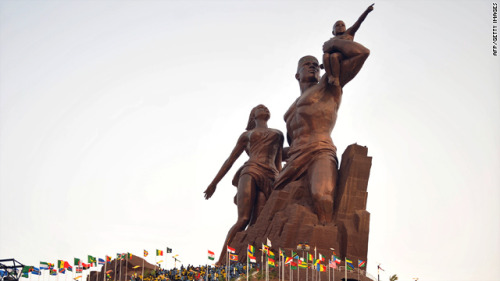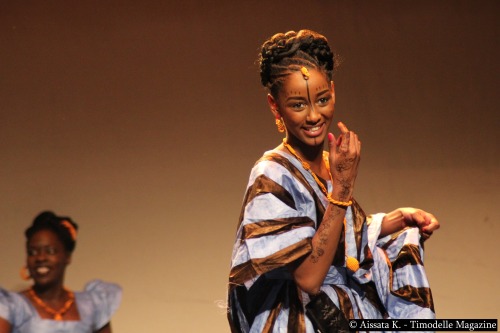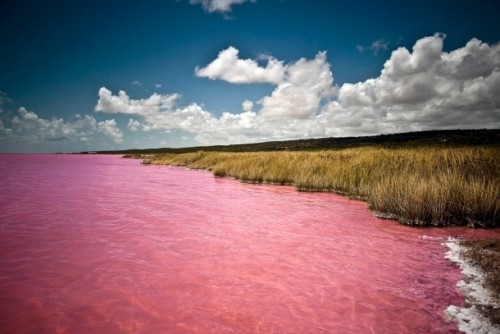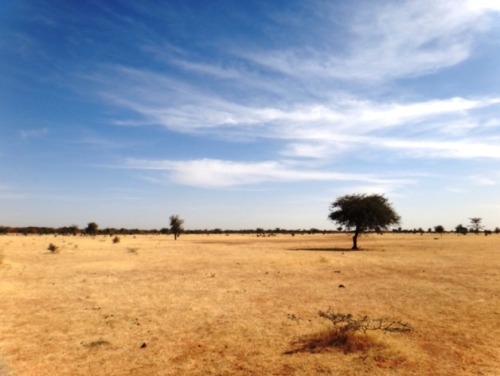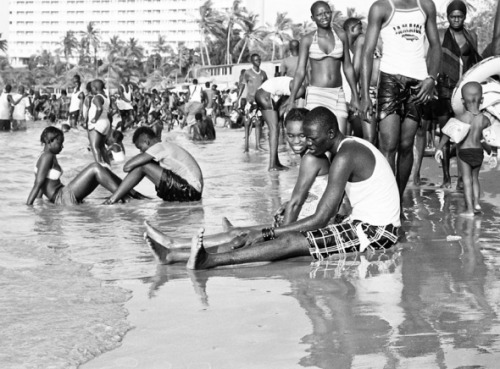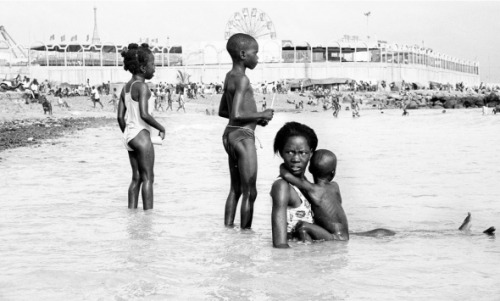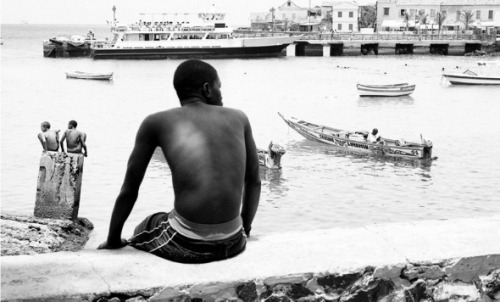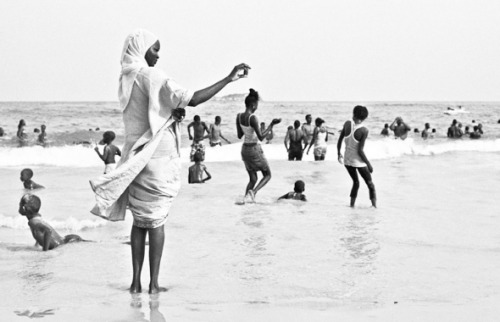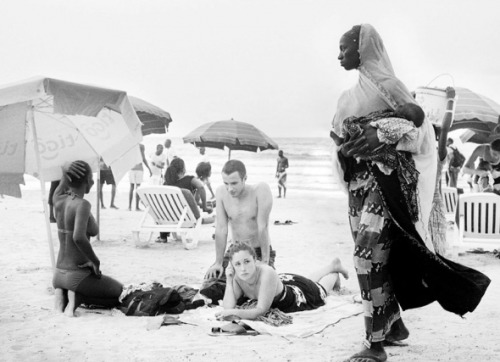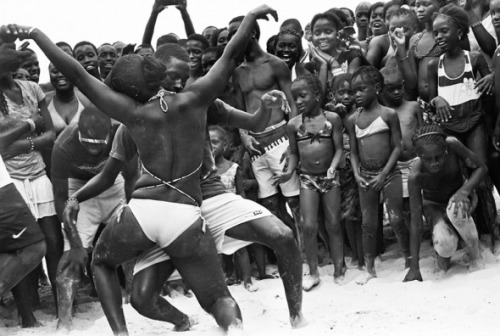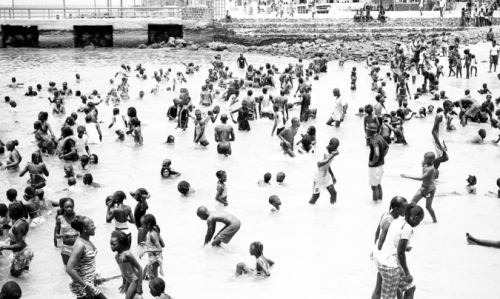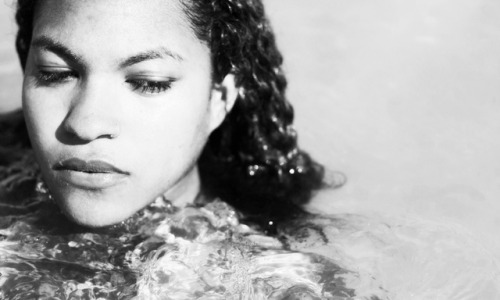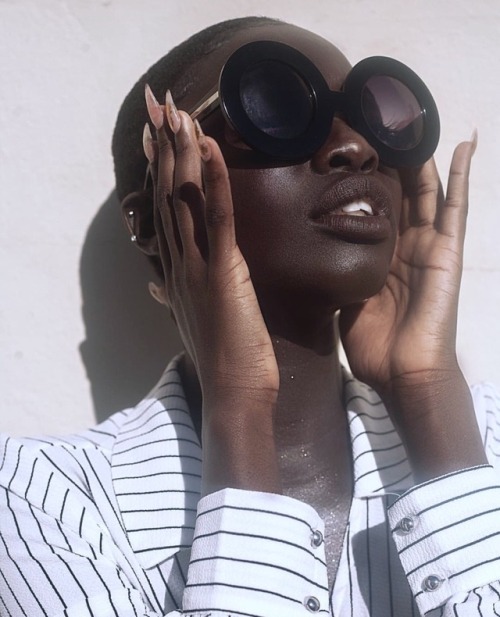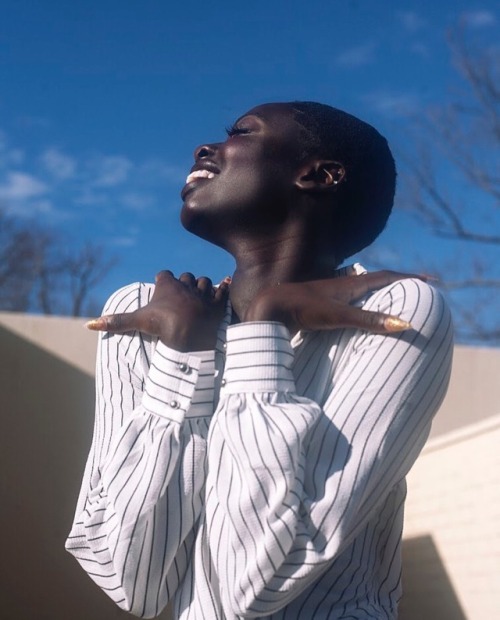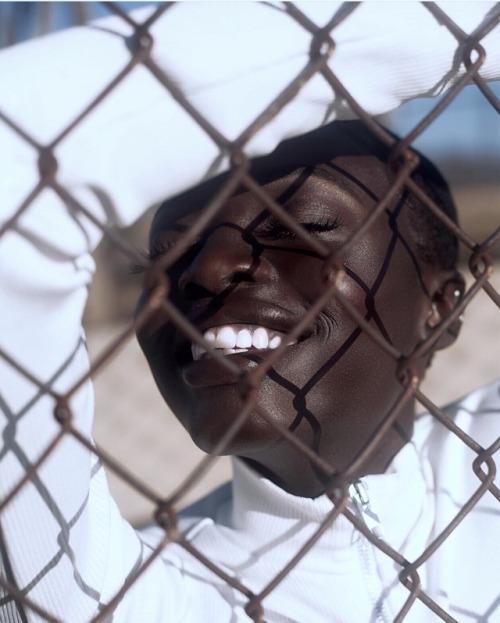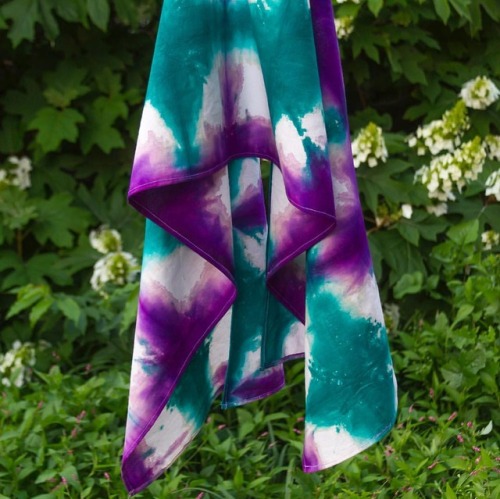#senegalese

@diarrasyllalofficiel
Happy Independence day!
Senegal, officially the Republic of Senegal is a country in West Africa. It is the westernmost country in the mainland of the Old World or Eurafrasia and owes its name to the Sénégal River that borders it to the east and north. The climate is tropical with two seasons: the dry season and the rainy season.
Dakar, the capital city of Senegal, is located at the westernmost tip of the country on the Cap-Vert peninsula. Archaeological findings throughout the area indicate that Senegal was inhabited in prehistoric times and has been continuously occupied by various ethnic groups. Some kingdoms were created around the 7th century: Takrur in the 9th century, Namandiru and the Jolof Empire during the 13th and 14th centuries. Eastern Senegal was once part of the Ghana Empire.
Islam was introduced through Toucouleur and Soninke contact with the hypo-Saharan Almoravid dynasty, who in turn propagated it. The Almoravids, with the help of Toucouleur allies, used military force for conversion. This movement faced resistance from ethnicities of traditional religions, the Serers in particular In the 19th and 20th centuries, the Wolof converted peacefully due to the intervention of leaders such as Amadou Bamba, Malik Sy and Sayyidunâ Muhammad Al-imam Laye, who brought their followers with them. They saw Islam as a way to unite and fight against colonial power.
In the 13th and 14th centuries, the area came under the influence of the empires to the east; the Jolof Empire of Senegal was also founded during this time. In the Senegambia region, between 1300 and 1900, close to one-third of the population was enslaved, typically as a result of captives taken in warfare.
In the 14th century the Jolof Empire grew powerful, having united Cayor and the kingdoms of Baol, Sine, Saloum, Waalo, Futa Tooro and Bambouk. The empire was a voluntary confederacy of various states rather than an empire built on military conques. The empire was founded by Ndiadiane Ndiaye, a part Serer and part Toucouleur, who was able to form a coalition with many ethnicities, but collapsed around 1549 with the defeat and killing of Lele Fouli Fak by Amari Ngone Sobel Fall.
During the 17th and 18th centuries, numerous trading posts belonging to various European colonial empires were established along the coast. After French colonization of the territory called French West Africa (Afrique occidentale française, or AOF), the town of St. Louis became the capital; in 1902 it was succeeded by Dakar. When Senegal gained independence from France in 1960, it affirmed its capital as Dakar.
Senegal has a wide variety of ethnic groups and, as in most West African countries, several languages are widely spoken. The Wolof are the largest single ethnic group in Senegal at 43 percent; the Fula and Toucouleur (also known as Halpulaar’en, literally “Pulaar-speakers”) (24%) are the second biggest group, followed by the Serer (14.7%),then others such as Jola (4%), Mandinka (3%), Maures or (Naarkajors), Soninke, Bassari and many smaller communities (9%).
The country is part of The Economic Community of West African States (ECOWAS). Integrated with the main bodies of the international community, Senegal is also a member of the African Union (AU) and the Community of Sahel-Saharan States. Since 2 April 2012, the country’s president has been Macky Sall.
Senegal is also home to home to Africa’s tallest statue, The African Renaissance monument.
Post link
Bonne fête de l’indépendance à tous mes compatriotes sénégalais !
Happy Independence Day to all my fellow Senegalese!
Post link
Happy Independence day!
Senegal, officially the Republic of Senegal is a country in West Africa. It is the westernmost country in the mainland of the Old World or Eurafrasia and owes its name to the Sénégal River that borders it to the east and north. The climate is tropical with two seasons: the dry season and the rainy season.
Dakar, the capital city of Senegal, is located at the westernmost tip of the country on the Cap-Vert peninsula. Archaeological findings throughout the area indicate that Senegal was inhabited in prehistoric times and has been continuously occupied by various ethnic groups. Some kingdoms were created around the 7th century: Takrur in the 9th century, Namandiru and the Jolof Empire during the 13th and 14th centuries. Eastern Senegal was once part of the Ghana Empire.
Islam was introduced through Toucouleur and Soninke contact with the hypo-Saharan Almoravid dynasty, who in turn propagated it. The Almoravids, with the help of Toucouleur allies, used military force for conversion. This movement faced resistance from ethnicities of traditional religions, the Serers in particular In the 19th and 20th centuries, the Wolof converted peacefully due to the intervention of leaders such as Amadou Bamba, Malik Sy and Sayyidunâ Muhammad Al-imam Laye, who brought their followers with them. They saw Islam as a way to unite and fight against colonial power.
In the 13th and 14th centuries, the area came under the influence of the empires to the east; the Jolof Empire of Senegal was also founded during this time. In the Senegambia region, between 1300 and 1900, close to one-third of the population was enslaved, typically as a result of captives taken in warfare.
In the 14th century the Jolof Empire grew powerful, having united Cayor and the kingdoms of Baol, Sine, Saloum, Waalo, Futa Tooro and Bambouk. The empire was a voluntary confederacy of various states rather than an empire built on military conques. The empire was founded by Ndiadiane Ndiaye, a part Serer and part Toucouleur, who was able to form a coalition with many ethnicities, but collapsed around 1549 with the defeat and killing of Lele Fouli Fak by Amari Ngone Sobel Fall.
During the 17th and 18th centuries, numerous trading posts belonging to various European colonial empires were established along the coast. After French colonization of the territory called French West Africa (Afrique occidentale française, or AOF), the town of St. Louis became the capital; in 1902 it was succeeded by Dakar. When Senegal gained independence from France in 1960, it affirmed its capital as Dakar.
Senegal has a wide variety of ethnic groups and, as in most West African countries, several languages are widely spoken. The Wolof are the largest single ethnic group in Senegal at 43 percent; the Fula and Toucouleur (also known as Halpulaar’en, literally “Pulaar-speakers”) (24%) are the second biggest group, followed by the Serer (14.7%),then others such as Jola (4%), Mandinka (3%), Maures or (Naarkajors), Soninke, Bassari and many smaller communities (9%).
The country is part of The Economic Community of West African States (ECOWAS). Integrated with the main bodies of the international community, Senegal is also a member of the African Union (AU) and the Community of Sahel-Saharan States. Since 2 April 2012, the country’s president has been Macky Sall.
Senegal is also home to home to Africa’s tallest statue, The African Renaissance monument.
Post link
In Photos: “A Gorean Summer” by Fabrice Monteiro.
The usual photographs I’ve become accustomed to seeing of Goree Island are usually related to the island’s historic past as a port and base for European traders. These black-and-white images by Belgian-Beninese photographer Fabrice Monteiro stand in stark contrast to the colourful yet still and scenic landscapes that often make Goree island seem empty and uninhabited. A Gorean Summer is based on both the beaches of Goree, Dakar and other surrounding beaches near Senegal’s capital.
Twitter | Facebook | Pinterest | Google+ | Soundcloud | Mixcloud | Instagram | Newsletter.
All Africa, All the time.
Post link
A Senegalese Tirailleur has some lunch at Camp Robert in France, 1915.
Original image source: Bibliotheque Nationale de France
Post link


Fatou Sibide // styled by Monet Maxwell
Photo & Makeup by Me.
https://www.instagram.com/p/B0jX5p2F1ef/?igshid=w53y9jwpas5u
These beautiful works of art were hand dyed by West African artisans on cotton. We purchased this particular piece from a Senegalese woman at Lake Retba aka Lac Rose, the pink lake in Senegal
•
This is a piece of African ART dyed by hand in Senegal… it is NOT African print, which is wide spread because they’re mass produced mostly in China now. PRODUCTION MATTERS! Whose eating off your “culture”?
.
.
.
#HightopsandHeels #CoinsandCowries #HealingBar #Senegalese #handdyed #madeinafrica #westafrican #Afraka #LacRose #pinklake #Senegal #travelnoire #buyblack #blackowned
https://www.instagram.com/p/BwayVYyFYBy/?utm_source=ig_tumblr_share&igshid=f6z0z3xjjd1e
Post link










